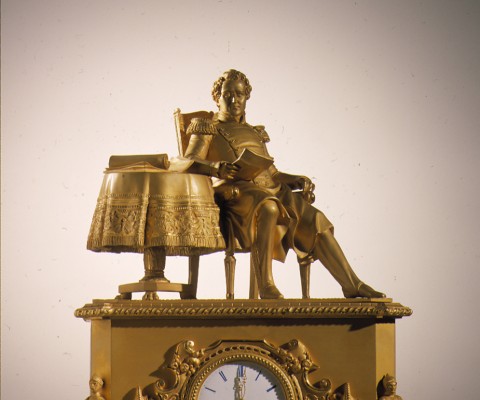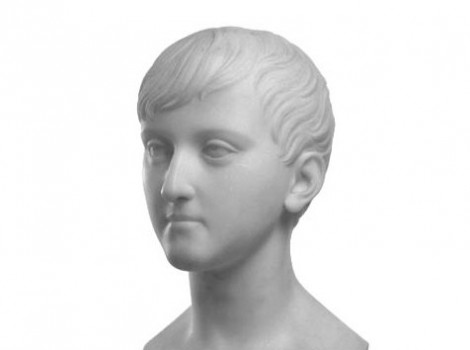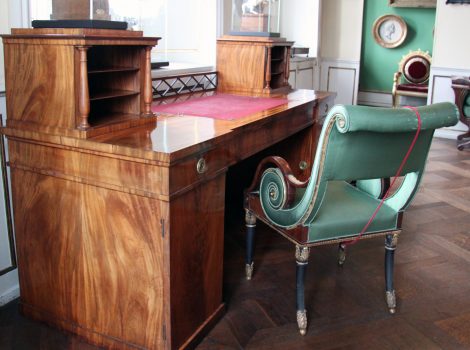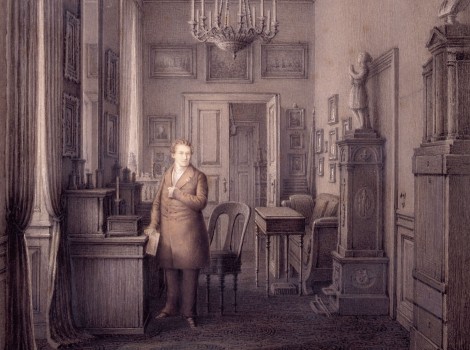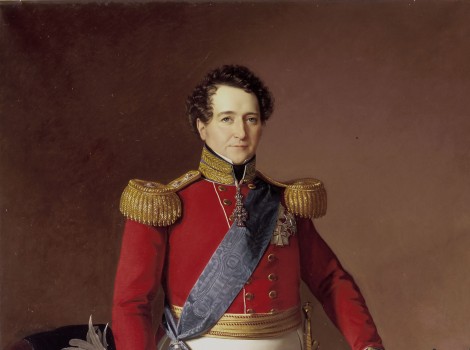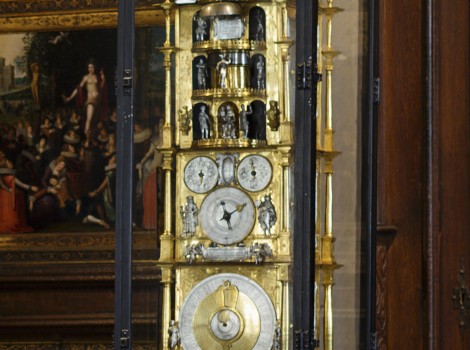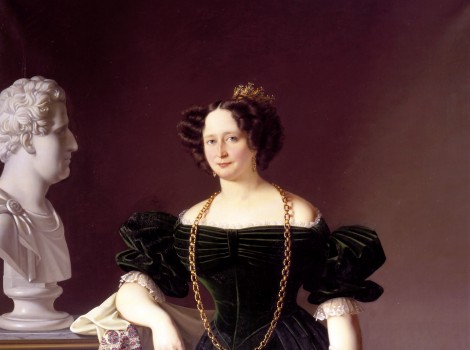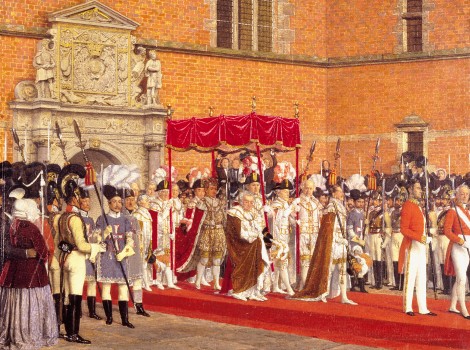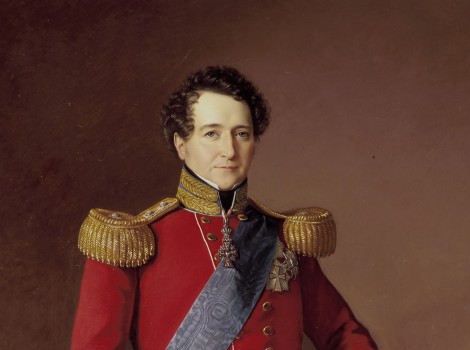Mantelpiece clock
Mantelpiece clock with bronze statuette of Christian VIII. Made by A. & W. Jacobsen. Equestrian statuettes were the typical symbol for absolute monarchs hereby showing prestige and power, this clock, however, portrays King Christian VIII as an enlightened ruler sorrounded by paper. As the last coronated king in danish history he falls into a general european trend, as he was interested in arts and other cultural subjects due to his excellent education.
He likewise falls into a trend when he supposedly imposed his son and successor Frederik VII that he should introduce the first constitution to the danish people. The rather harmonious crossover to parliamentarism from absolute monarchy is said to be very typical of the danish state of mind, tending to stay away from radical decisions, to a certain degree of course.

 Dansk
Dansk
 English
English
 Deutsch
Deutsch

